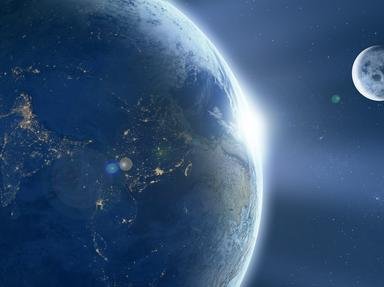Quiz Answer Key and Fun Facts
1. Earth's moon contains several seas, or 'maria', such as the Sea of Crises or the Sea of Clouds. Do any of these 'seas' actually contain water?
2. The two moons of Mars are Phobos and Deimos, named after the sons of Ares, the Greek god of war. Which astronomer discovered them in 1877?
3. Apollo 11 was the first manned US spacecraft to successfully land on the Moon, in 1969. Three years earlier, a Soviet spacecraft had landed safely on the Moon, without any damage to itself, and took photographs of the lunar surface. Which spacecraft was this?
4. There are several types of mineral on the moon, some of which have been brought back to Earth as samples. Which mineral, named for its colour, is composed of iron, silicon, magnesium and oxygen, and has also been found on Mars?
5. Which moon is the largest moon of Venus?
6. Charon is the closest moon to the dwarf planet Pluto, but which moon - named for a nine-headed serpent in Greek mythology - is the farthest to have been discovered by 2018?
7. Triton is the largest of Neptune's moons. Which of these facts about it are NOT true?
8. Titan is the largest moon of Saturn, 50% larger than our Moon. What is particularly notable about it compared to other moons?
9. Uranus has 27 moons, the largest of which are Ariel, Miranda, Oberon, Titania and Umbriel. What theme do all these names - and, indeed, the names of its other moons - have in common?
10. What is the collective name for the four biggest moons of Jupiter?
Source: Author
Kankurette
This quiz was reviewed by FunTrivia editor
rossian before going online.
Any errors found in FunTrivia content are routinely corrected through our feedback system.
